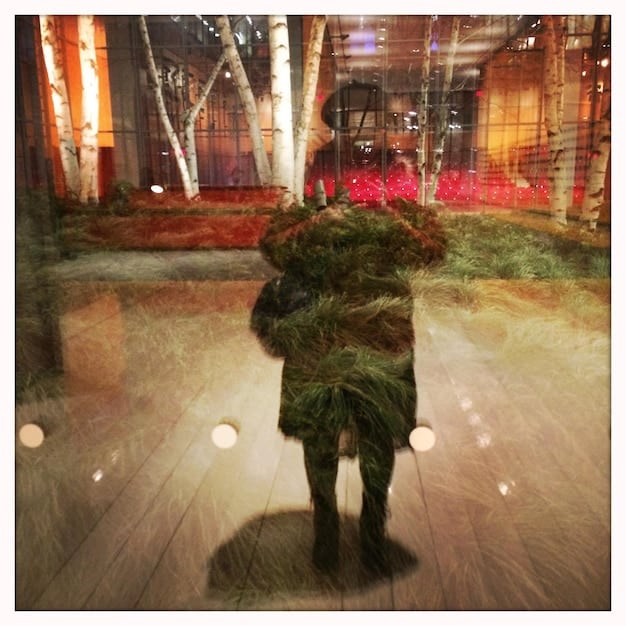The Art of the Cliffhanger: Keeping You Hooked on Drama Series

The art of the cliffhanger in drama series involves creating suspenseful and unresolved moments at the end of episodes, compelling viewers to tune in for the next installment to discover the resolution.
Ever found yourself impatiently waiting for the next episode of your favorite drama series? The secret often lies in the art of the cliffhanger: how drama series keep you hooked, leaving you craving resolution and more.
Understanding the Cliffhanger: Definition and Purpose
The cliffhanger is a narrative device used extensively in drama series. It ends an episode on a suspenseful note, leaving the audience in a state of uncertainty and anticipation.
Essentially, a cliffhanger is designed to ensure that viewers return for the next installment. It’s a powerful tool in a storyteller’s arsenal to maintain engagement and build a loyal audience.
Defining the Core Elements of a Cliffhanger
Several elements contribute to the effectiveness of a cliffhanger. These include suspense, unresolved conflict, and a high level of emotional investment from the audience.
- Suspense: Creating a sense of unease and anticipation about what will happen next.
- Unresolved Conflict: Leaving a storyline or character’s fate hanging in the balance.
- Emotional Investment: Ensuring the audience cares deeply about the characters and outcomes.
A well-executed cliffhanger uses these elements to maximize the impact on the viewer, ensuring they feel compelled to seek resolution.
The Psychological Impact of Cliffhangers
Cliffhangers tap into our psychological need for closure. When a narrative is left unresolved, our minds naturally seek to fill in the gaps and find a satisfying conclusion.
This psychological pull is a key reason why cliffhangers are so effective in keeping us engaged with drama series.

The Zeigarnik Effect and Cliffhangers
The Zeigarnik effect is a psychological phenomenon that explains our tendency to remember incomplete or interrupted tasks better than completed ones. Cliffhangers exploit this effect.
- Memory Retention: Unresolved narratives stick in our minds.
- Increased Engagement: We’re more likely to revisit the narrative to seek closure.
- Emotional Response: Cliffhangers evoke stronger emotions, making the experience more memorable.
By leaving storylines incomplete, drama series ensure that their narratives remain at the forefront of our minds.
Understanding this psychological effect helps us appreciate the strategic use of cliffhangers in storytelling. This technique ensures the audience remains invested and eager to watch the next episode.
Types of Cliffhangers Commonly Used
Cliffhangers come in various forms, each with its unique way of creating suspense and anticipation. Recognizing these types can enhance your appreciation of drama series.
By understanding the different techniques, screenwriters craft narratives that keep viewers engaged, eagerly awaiting the next episode.
Life-or-Death Cliffhangers
This classic type involves placing a character in a perilous situation where their survival is uncertain. This could involve a physical threat, a deadly accident, or a medical crisis.
- High Stakes: Directly threatens the life of a main character.
- Immediate Concern: Creates an urgent need to know the character’s fate.
- Elevated Tension: Heightens the emotional investment in the series.
Life-or-death cliffhangers are among the most dramatic, designed to shock and keep viewers on the edge of their seats.
These scenarios make the audience deeply concerned about the well-being of the character, driving them to tune in to find out what happens next.
Examples of Memorable Cliffhangers in TV History
Throughout television history, certain cliffhangers have become iconic, setting new standards for suspense and audience engagement. These moments are often talked about for years.
Examining these examples provides insight into what makes a cliffhanger truly memorable and effective.

“Who Shot J.R.?” – Dallas
One of the most famous cliffhangers in TV history, the “Who Shot J.R.?” storyline from Dallas captivated audiences worldwide. The question of who attempted to murder the show’s central character became a cultural phenomenon.
The mystery surrounding the shooter kept viewers guessing for months, driving up ratings and sparking widespread speculation.
This cliffhanger set a new benchmark for television suspense, illustrating the power of a well-crafted mystery to engage and retain viewers.
The success of this cliffhanger highlights the importance of creating a compelling question that viewers are desperate to have answered.
Crafting Effective Cliffhangers: Tips for Writers
Creating a cliffhanger that truly resonates with viewers requires careful planning and execution. It’s about more than just leaving a storyline unresolved.
Here are some tips for screenwriters looking to master the art of the cliffhanger.
Build Anticipation Gradually
Effective cliffhangers don’t come out of nowhere. They are often the culmination of a storyline that has been building gradually throughout the episode.
- Subtle Hints: Plant clues and foreshadowing throughout the episode.
- Rising Tension: Gradually increase the stakes and sense of urgency.
- Emotional Investment: Ensure viewers are invested in the characters and their stories.
By building anticipation, you create a more satisfying and impactful cliffhanger.
This slow burn approach allows viewers to become fully immersed in the story, making the final cliffhanger all the more effective.
The Future of Cliffhangers in Streaming Era
With the rise of streaming services and binge-watching, the role of cliffhangers is evolving. The traditional weekly suspense is being replaced by different strategies.
Understanding these changes is crucial for creating content that thrives in the digital age.
Binge-Watching and the Cliffhanger
In a binge-watching environment, viewers have immediate access to the next episode, which changes the dynamic of the cliffhanger.
- Immediate Gratification: Viewers can resolve the suspense quickly.
- Series-Long Arcs: Storylines can span multiple episodes, creating more complex cliffhangers.
- New Forms of Suspense: Focus on broader narrative arcs and character development.
Rather than creating a simple plot twist at the end of the episode, cliffhangers in the streaming era often involve deeper, more intricate story arcs.
This shift encourages writers to think beyond the individual episode and consider the overall narrative journey.
| Key Element | Brief Description |
|---|---|
| 🤔 Suspense | Creating uncertainty and anticipation in the viewer. |
| 🤯 Unresolved Conflict | Leaving storylines without closure. |
| 💔 Emotional Investment | Making viewers care deeply about the characters. |
| 📺 Binge-Watching | Adapting cliffhangers for streaming services. |
Frequently Asked Questions
▼
A cliffhanger is a narrative technique that ends an episode on a suspenseful or unresolved note, leaving the audience in a state of anticipation and eagerness to find out what happens next.
▼
Cliffhangers are effective because they tap into our psychological need for closure. Unresolved storylines create a sense of unease, compelling us to seek resolution by watching the next episode.
▼
Common types include life-or-death situations, shocking revelations, unresolved conflicts, and cliffhangers that leave the fate of a character hanging in the balance. Each builds suspense in unique ways.
▼
Binge-watching has led to the evolution of cliffhangers, resulting in entire story arcs spanning multiple episodes. This allows for more complex and interconnected cliffhangers compared to traditional episodic TV.
▼
Memorable cliffhangers involve high stakes, emotional investment, and unexpected twists. They create a lingering impact that stays with viewers, ensuring they tune in for the next episode.
Conclusion
In conclusion, the art of the cliffhanger: how drama series keep you hooked is a blend of psychological understanding, narrative skill, and strategic timing. By understanding what makes a cliffhanger effective, viewers and creators alike can better appreciate the compelling power of unresolved suspense.





